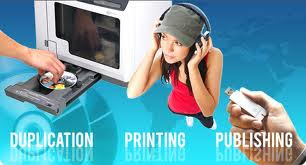

Self-publishing simply means writing, publishing and marketing your own work, maybe a novel or autobiography, poetry or family history, a newsletter or 'How To' book, or any of numerous other writing forms.
Self-publishing allows you to write what you want and market it any way you choose. The right titles and topics could earn you a fortune.
REASONS FOR SELF PUBLISHING
- To see your name in print.
- As a keepsake or heirloom. Family histories are useful examples, as are autobiographies, diaries and poetry.
- To enhance one's image and standing. Doctors, dentists, lawyers and other professionals frequently self-publish to enhance their professional image and standing with colleagues.
- As a form of advertising. Some self-published products are little more than advertising vehicles for other of the writers' goods and services. Mail order newsletters are a notable example.
- For money.
This blueprint is written with the latter objective in mind.
WHY DIY?
Why bother with self-publishing? Why not instead offer your book for someone else to publish and market?
Generally speaking, traditional publishers are only interested in high volume sales, to wide markets and for items with a long-shelf life. Getting a mainstream publisher to handle your work can be a very long and painful process. There's no saying you will be successful and even big names face their share of rejection. Frederick Forsyth's 'The Day of the Jackal' apparently had 19 rejections and one of Jeffrey Archer's most popular works got 18, showing publishers don't always get it right.
VANITY PUBLISHING V SELF-PUBLISHING
The two are frequently confused, although few similarities actually exist. Vanity publishing generally means having someone else print, publish and market your book for you. Costs can be high and benefits not always proportionate. For products intended as gifts for family and friends, vanity publishing can be a worthwhile option; no always so for commercial products.
That said, however, there are numerous firms - not vanity or subsidy publishers - who can print and publish for you, leaving you to concentrate on marketing and distribution. Such firms can be found advertising in most writers' newsletters.
FAMOUS SELF-PUBLISHERS
America boasts a wealth of super-successful self-publishers, including heads of multi-million dollar publishing companies. Names like Joe Karbo, Dr. Jeffrey Lant and Melvin Powers spring readily to mind.
WHAT CAN BE SELF-PUBLISHED?
Virtually anything can be self-published profitably to a greater or lesser extent. Novels, poetry, short stories, local and family histories, newsletters, autobiographies and 'How To' books are all worthy examples.
MOST PROFITABLE AREAS OF SELF-PUBLISHING
The most successful products are those that fulfil universal needs or desires, especially where they contain information not available elsewhere. Examples include:
- Directories (e.g. Designer Clothes Discount Guides, Factory Shop Guides).
- Newsletters (e.g. Business Opportunities Digest).
- 'How to' books (e.g. '£100,000 in My First Year Just by Working Weekends', 'Last Chance Guide to Financial Success').
' Self-Help Books (e.g. 'How to Flatten Your Tush', 'How to Talk to Your Cat').
The above are examples of topics and do not indicate self-published titles.
WHAT INVESTMENT IS NEEDED?
This depends on a number of things including the length of the finished product, whether it is to be typeset and who is responsible for typesetting, what printing and binding methods are used, size of the initial print run and what marketing and distribution methods are involved.
Generally speaking, most first-time self-publishers opt for a low print run with the majority of capital reserved for aggressive marketing. Profits are subsequently ploughed back into longer print runs.
BENEFITS OF BEING YOUR OWN PUBLISHER
* Cuts out the middle man and generates higher profits for you.
* No working to someone else's deadlines.
* Total control over your work, from conceiving the idea to researching and writing, to printing and publishing, advertising and distributing.
* Very cost-effective if handled properly.
* Allows virtually anyone to compete with big names writers and publishers.
* Self-publishing is a business like any other, offering freedom, the chance to work your own chosen hours, work where you like, etc.
* Massive potential market for some titles.
DRAWBACKS TO BEING YOUR OWN PUBLISHER
Some outside help might be necessary for various aspects of your project and costs can be high. This might involve help with writing and editing, proofreading, desktop publishing, printing, marketing. Do as much as you can yourself, as long as quality is good.
WHAT YOU CAN EARN
Ask most people about profits in publishing and they'll turn to the bestseller lists, mainly compiled for sales through book shops. A more accurate guide would include other methods of marketing and distribution, primarily mail order. In 'How to Publish a Book and Sell a Million Copies', Ted Nicholas explains that another of his books 'How to Form Your Own Corporation Without a Lawyer for Under $75' has been among the top 10 nonfiction bestsellers in the United States for over 20 years, but has never appeared on a bestseller list. The main reason he sells it himself, by mail order.
PRACTICAL TIPS
- Be realistic about your initial print run. Don't be too ambitious and be saddled with lots of unsalable stock. But don't underestimate popularity either. Extra print runs frequently mean higher costs than a larger initial print run.
- Have readers finance your printing costs by obtaining orders before you print your book, even before you research and write it. Legally, you are not allowed to offer anything for sale unless adequate supplies are available. So be careful how you word your advertisement or direct mail copy. A 'pre-publication' offer is usually acceptable. Offering your book this way has other benefits, including allowing you to test the market for your book and to test the optimum price where the product is offered at different prices and response rates and profits compared. If results aren't satisfactory, you can issue refunds.
- Some writers simply do not have a head for business. If this sounds like you, have someone else concentrate on publishing and marketing your products while you devote time to writing.
- Be careful about pricing. What you charge will affect your advertising strategy and vice versa.
- Consider various printing and publishing options. Desktop publishing produces a quality look and can be introduced to most computers. For binding your products, consider the many options from saddle-stitching (basically stapling), to comb binding and heat binding (both need special equipment).
MARKETING
The most common marketing methods employed by self-publishers are direct marketing (mail order) and direct mail.
Direct marketing means advertising your product in appropriate publications, using classified or display advertisements or a combination of both.
Direct mail means offering your products by post, usually to prospects identified from mailing lists. These are available from various sources including competitors, other mail order and direct mail specialists and mailing list brokers.
Numerous books are available to explain the basics of marketing by mail order and direct mail. Other ways to market your products.
- Press Release. A simple letter providing information about you, your book and what benefits it has for readers can generate hundreds of sales through appropriate sources. One Canadian publisher reports tens of thousands of sales for two books promoted by press release through international newspapers and magazines. Copies should also be sent to television and radio stations local and national.
- Through bookshops. This can mean negotiating wholesale terms through major outlets or offering copies on a 'sale or return' basis through independent retailers. Increase profits by holding autograph parties in larger bookshops.
- Write a course about self-publishing or organise classes, seminars and lectures. Offer your book to students and participants.
- Write articles and readers' letters about your book or its subject. Alternatively, write about something else in return for a mention for your book.
- Where appropriate, market your book through schools, colleges, book clubs, local history groups, or other appropriate organisations.
www.made-from-india.com maintains a database for Publishing Products and Services, magazine publishing, outsource book publishing, desktop publishing in India, self publishing in India, poetry publishing, publishing graphic, business to business desktop publishing, laser printing machine, printing machine, printing ink sellers, internet design services, and web design services.


































